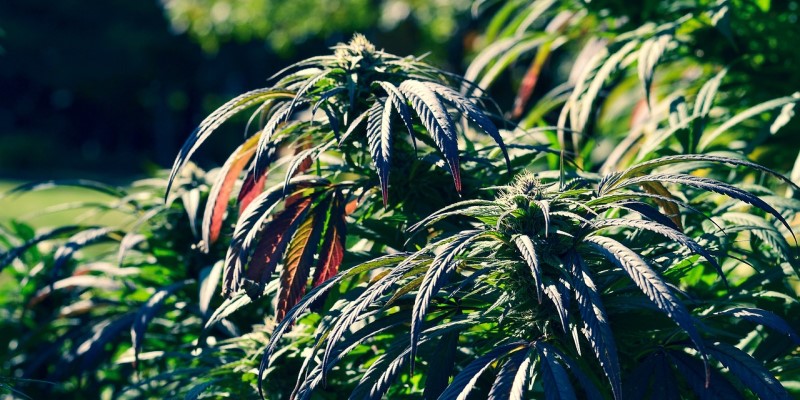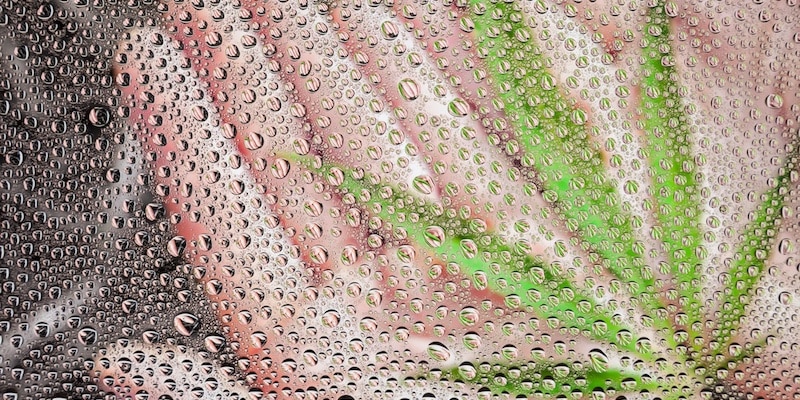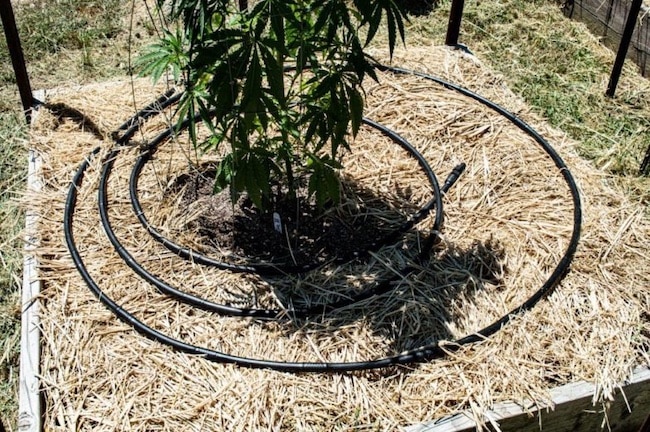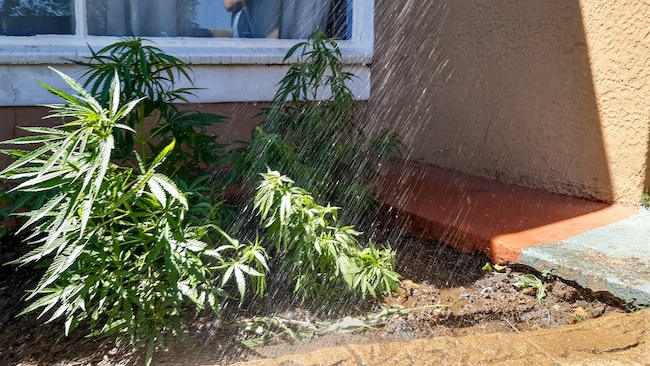
How to make guerrilla growing as sustainable as possible
Guerrilla growing can be the perfect option for those wanting to grow cannabis outdoors but who lack a space like a garden or a patio; or simply for those who have nosy neighbours. When done…
Iberian Peninsula express shipping
0€ Orders over 60€
*6€ orders under 59€
East, West, South Europe express shipping
0€ Orders over 150€
*18€ orders under 149€
North Europe express shipping
0€ Orders over 160€
*20€ orders under 159€
Ireland, Norway, UK normal shipping
0€ Orders over 60€
*6€ orders under 59€
Rest of the world normal shipping
0€ Orders over 180€
*25€ orders under 179€
Shipping costs can be confirmed in your shopping cart.
For additional shipping methods, please reach out through info@kannabia.com.


*Website protected by SSL.
**Not available in all regions.
*Your coupon will be sent via email.
*Should you have any question, comment or feedback, please do not hesitate to contact us.

Growing cannabis outdoors during the summer can be a significant challenge, especially during extreme heat waves. High temperatures can cause thermal stress, dehydration, and leaf damage on the plants. However, with proper control and irrigation techniques, it is possible to keep your plants healthy and productive. In this article, we explore various strategies to keep your cannabis plants well hydrated during periods of extreme heat.
As the scorching summer heat approaches, it is crucial to ensure that your cannabis plants are well hydrated despite the rising temperatures. Heat waves can be especially difficult for cannabis grows, as they can cause stress, wilting, and other possible damage. But fear not! Here we share some essential top tips to help your cannabis plants to not only survive but to thrive during a heat wave.
When cannabis is grown in extreme heat conditions, choosing the right watering system is vital to ensure that the plants stay healthy. There are several effective irrigation systems for the hydration of cannabis during intense heat:
Deep watering is crucial to ensure that the water reaches the deepest roots, thereby promoting robust root growth. Shallow watering can lead to shallow root development, which makes plants more susceptible to heat stress.
Slow and deep irrigation at the base of the plant is the best preparation for excessive heat because it pushes the roots deeper into the soil. Plants are like people: they become lazy. If they get water for five minutes every day, they keep their roots close to the surface; but when you water them deeply, you’re training the plants to send their roots deep into the soil, where the water is.
Using soaker hoses or drip irrigation systems can be an excellent option, as they allow for a uniform distribution of water directly in the root area, thereby minimising evaporation and ensuring that the plants receive a constant and adequate amount of moisture, even during the hottest days.
When temperatures get higher than 30ºC, plants simply ‘switch off’, meaning they cannot absorb or ‘perspire’ water. By the end of the day, the plants may appear to be wilted, but test the soil before you take out the hose. If the soil is dry, add some water for the plants to absorb once the temperatures drop at night. But if the pot feels heavy or the soil feels wet at 3 cm or more below the ground, your plant doesn’t need more moisture and could actually drown from getting too much water. The best test is to check the plant again in the morning. If it hasn’t recovered and is still withering, give it more water.
Mulch, whether organic or inorganic, helps to keep moisture in the soil and reduces the temperature around the roots. Materials like straw, hay, grass clippings, compost, and leaves can be used to cover the soil around cannabis plants. Not only does this help retain moisture, but also protects the surface roots from extreme heat and promotes a healthy environment for beneficial soil microbes.

When it’s very hot, it’s essential to check the humidity of potted plants every day first thing in the morning. You can use a moisture meter (there are many models for just €10), or by inserting your index finger a few centimetres into the soil to see if it comes out dry (if there’s wet soil attached to your finger when you take it out, the plant is not ready to be watered again). Water again late in the evening, especially if you’re growing extremely thirsty strains (potted plants dry faster than plants on the ground, so you may have to water them twice a day). Water slowly and abundantly, so that all the soil in the pot gets soaked rather than just making the water run down the sides of the container and out the bottom.
Avoid dark pots, which absorb more heat than light pots and can burn the roots of the plants. Wrap dark pots in light coloured fabrics to reduce heat absorption. Or place potted plants inside larger pots to give them some insulation and shade, but always making sure that both pots have good drainage. Plants can drown in stagnant water, even when it’s hot.
To minimise water loss by evaporation and ensure that the plants absorb the maximum amount of water and nutrients, it is advisable to water early in the morning, just after sunrise, or late at night, after sunset. During those times, temperatures are cooler, so the plants have time to absorb the water before the heat of the day begins.
Though it may be tempting, don’t water your plants at noon: those drops of water turn into little magnifying glasses on the leaves and intensify the heat. It is recommended to spray the plants to cool them, but only after the sun sets. This applies only when the nights are warm. Watering at night in colder temperatures can promote the appearance of mould, so it is best to water early in the morning so that the plants have a chance to dry out during the day.

Kelp supplements and humic acids can help plants handle both water and thermal stress. Kelp is rich in minerals and nutrients and can improve the resistance of plants to high temperatures. On the other hand, humic acids are naturally present in the soil, and can be added to increase water retention and improve the overall health of the soil.
Water-retaining polymers (also known as hydrogels) are another useful tool. These polymers can absorb large amounts of water and release it slowly, providing a constant source of moisture for the plants. When mixed with soil, they help maintain more stable moisture levels even during periods of extreme heat.
Providing shade to the plants during the hottest hours of the day can significantly reduce thermal stress. This can be achieved by using shade nets, tarps, or even by moving the pots to shaded areas. In addition, the construction of wind barriers can help protect plants from additional stress caused by hot and dry winds.
Mycorrhizae are beneficial fungi that form symbiotic relationships with the roots of the plants, helping them to absorb water and nutrients more efficiently. By inoculating the soil with mycorrhizae, you can improve the resistance of your cannabis plants to heat and drought, facilitating greater water and nutrient absorption under stress conditions.
It is important to avoid growing techniques that may cause additional stress to the plants during periods of extreme heat, such as heavy pruning or transplanting. These activities can weaken the plants and make them more vulnerable to thermal stress. Instead, focus on maintaining a stable and stress-free growing environment.
Keeping your cannabis plants hydrated and healthy during extreme heat conditions requires a combination of good watering practices, suitable supplements, and environmental management techniques. By implementing efficient irrigation systems, watering at the right times, using mulch and water-retaining polymers, or providing shade and protection from the wind, you can help your plants thrive even in the most challenging summer conditions. With these methods, you’ll be well on your way to ensuring a high-quality and plentiful harvest.